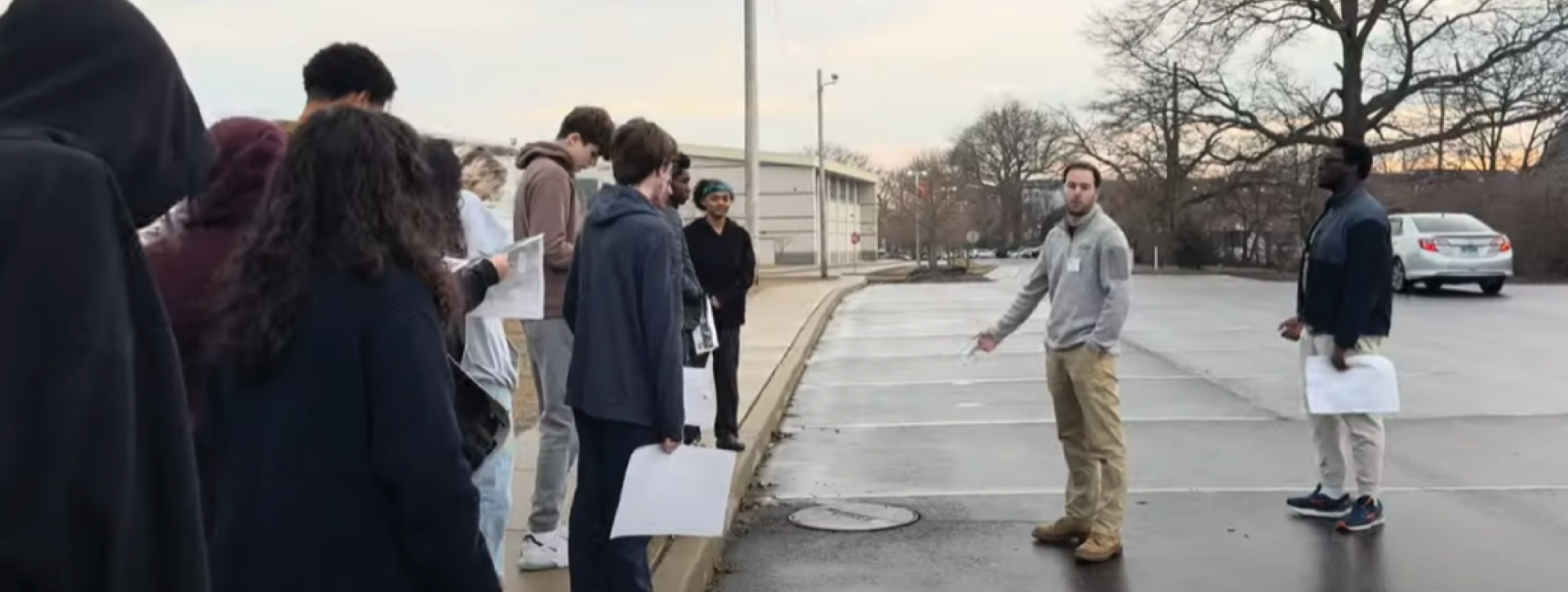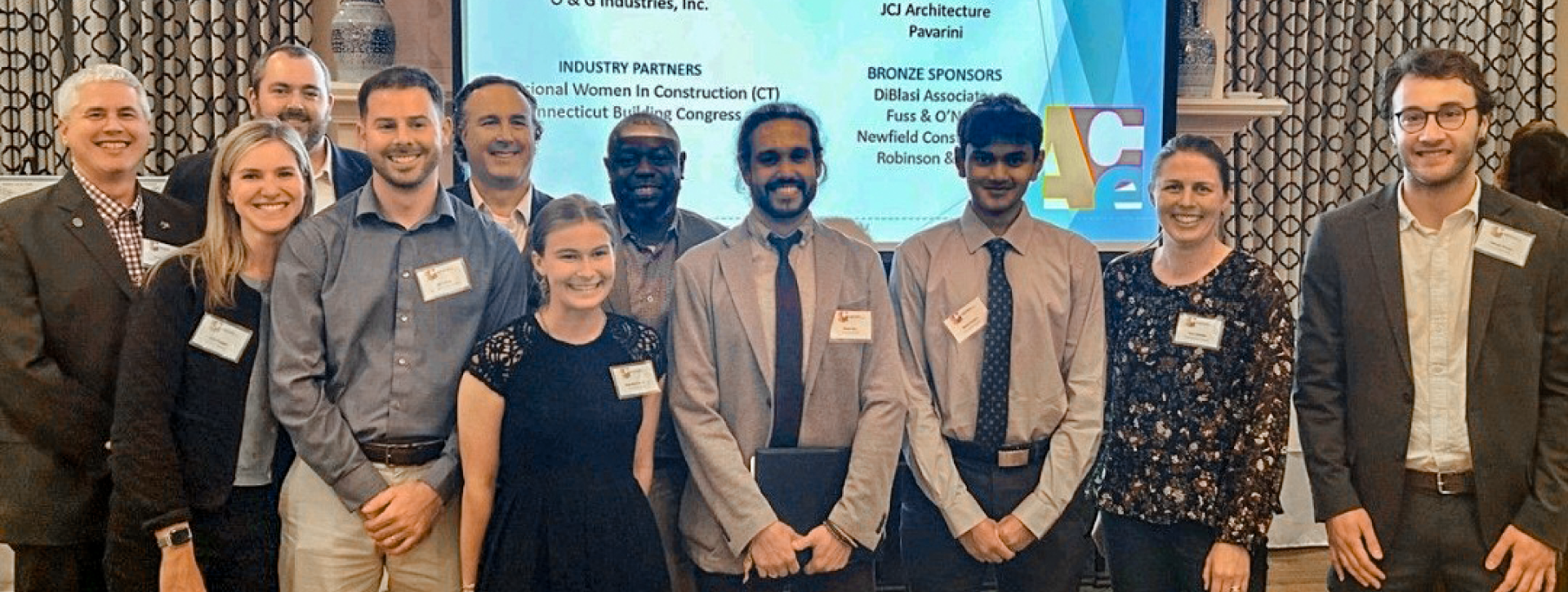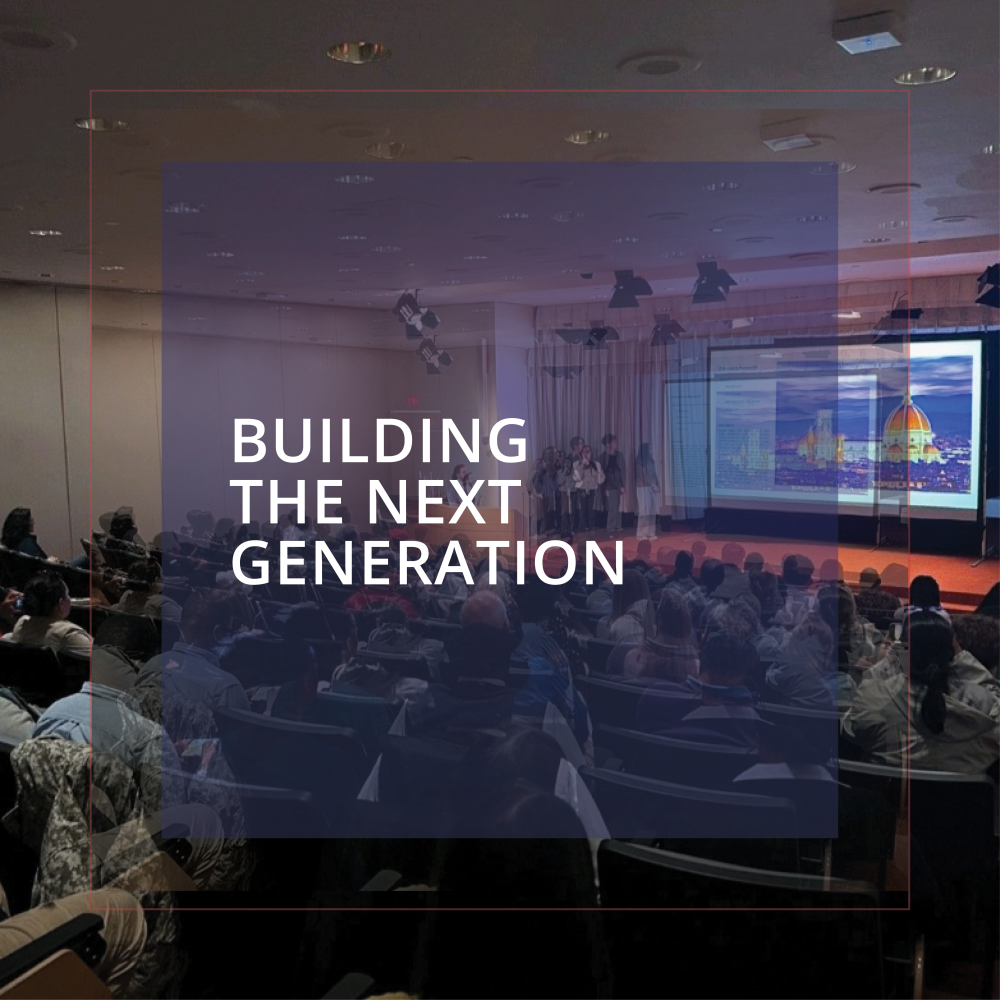Building the Next Generation
July 31st, 2025

How the ACE Mentor Program Gives High School Students Real-World Experience
When Tim Griffing joined the ACE (Architecture, Construction, Engineering) Mentor Program as a high school senior in Seymour, CT, he wasn’t sure what to expect. A guidance counselor had recommended it, and as someone already enrolled in drafting classes, it seemed like a good fit. Over a decade later, Tim is a senior civil project engineer at Loureiro and now serves as a mentor in the very same program that helped launch his career.
“I only did it for a year, but it changed how I thought about what I wanted to do,” Tim says. “It was actually through ACE that I realized I didn’t want to be an architect—I wanted to be a civil engineer. That early exposure made all the difference.”
Since 2017, Tim has mentored students in the Bridgeport/Stratford chapter of ACE, which brings together high school students from across the region to explore careers through hands-on projects, site visits, and real-world presentations. In 2019, he received the ACE Distinguished Mentor Award for his contributions as a mentor and team leader. Throughout the years he has worked alongside other industry professionals who he has reconnected with on actual projects he is involved in, on job sites, and even on the golf course.
But for Tim and other mentors across the state, the goal is simple: to open doors for the next generation.

A Yearlong Design Journey
The ACE Mentor Program begins each October and runs through May, following a structured, project-based format that mirrors what professionals do every day. The year kicks off with a series of presentations from engineers, architects, and other industry experts—many of whom are ACE alumni themselves. Mentors explain what their jobs entail, how they got there, and what a typical day might look like.
Each year, students receive a mock Request for Proposal (RFP)—a document that outlines the design challenge, budget, scope, and a real site to work with. The RFP might ask students to create something like a community marketplace, a boathouse, or an off-the-grid retreat, and includes tangible materials like site plans, scale drawings, and constraints provided by mentors. City representatives are often involved in site visits, playing the role of the client or developer, making the exercise even more immersive.
Students break into teams of four to six and take ownership of the project. Regardless of skill level, mentors like Tim guide them through each phase of the process: precedent research, bubble diagrams, floor plans, elevations, site planning, sustainability planning, utilities and mechanicals, cost estimates, and scheduling using Gantt charts.
“There’s a lot of learning as you go,” says Tim. “We guide them more than we used to, because we want them to understand how these disciplines work together. And we want them to have fun with it.”
Field trips throughout the year—like the annual visit to ENCON’s HVAC facility and visits to active construction sites—help reinforce what students are designing by showing the systems in real life.

A Professional Finish
The year concludes with formal presentations—this year held at Sacred Heart University—where students suit up, present their designs, and try to “win the job” in front of a panel of industry professionals, including owners, engineers, architects, and community members. Each team is evaluated not just on technical accuracy, but also on creativity, presentation skills, and how well they work together.
“It’s treated like a real proposal,” says Tim. “The judges act as the client. Students have to explain why their team and their design are the best fit for the project.”
While the graphics and renderings are impressive, it’s often the human-centered ideas that shine. “One group had a basic hand sketch,” Tim recalls, “but it included a playground and a gathering space that the judges really connected with. It felt like it belonged in the community. That simplicity and clarity won the room.”
Pathways to College, Careers, and Beyond
Upper-level students can take their learning even further by entering the ACE National Design Competition. These select teams receive a separate RFP with multiple prompts to choose from and prepare a new design to present on the national stage. While Connecticut teams have yet to place in the final round, the New Britain chapter was recently named runner-up—a proud achievement for a small but mighty state.
“It’s really a great opportunity for the students,” says Tim. “Some students come in not even knowing what civil engineering is. By the end, they’re talking about site plans and sustainable stormwater management systems. That transformation is incredible.”
ACE doesn’t end with a certificate. Students have access to scholarships at both the local and national level, including a prestigious full-ride to Wentworth Institute of Technology—available to just a handful of ACE students nationwide. Many go on to internships or job shadows at firms throughout the country, including Loureiro, often returning to mentor after they’ve started their careers.

A Small World, A Lasting Impact
The ACE Mentor program is constantly expanding its reach while maintaining its commitment to community impact, making it an ideal organization for Loureiro team members to engage with. There are four active chapters in Connecticut alone, as well as chapters in Boston, Providence, Concord, and Raleigh.
“There are a lot of people out there who don’t know programs like this even exist,” Tim says. “It’s a small world, and ACE helps make those first connections that can turn into careers.”
Whether a student dreams of becoming an architect or just wants to see what’s possible, the ACE Mentor Program gives them tools, exposure, and support. For Loureiro, supporting ACE is a way to invest in the future of the built environment—by helping students shape it themselves.
Interested in Getting Involved?
Whether you’re a student, parent, educator, or professional, there are many ways to participate. Contact Tim Griffing to learn more about mentorship opportunities and local chapter involvement.




